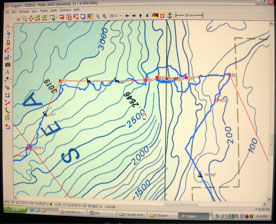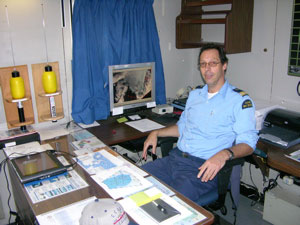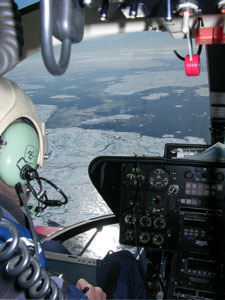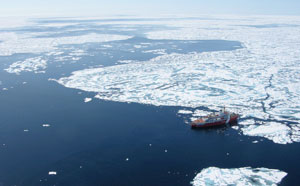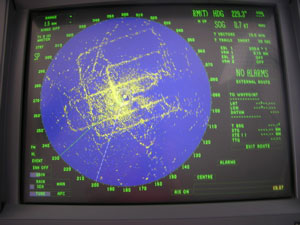Luc RainvilleAugust 10, 2007
In the Arctic you quickly learn that shortest way is not always the straight line. Navigating through the ice is quite an art. The ice comes in all types, with thickness and resistance that change continuously. The Louis is well equip ed with Radars to find ridges, cracks, and open water area through the thick fog we often have, and the ice observer, Denis Lambert, studies ice conditions from satellite images and helicopter reconnaissance flights to help plan the ship's course and science program. The ice in this area is surprisingly thin and easy to go through. On the Western part of the Canada Basin, it is all first-year ice (formed last winter) and quite 'rotten'. We encountered older ice and more difficult to navigate through earlier in the cruise. Some of it is certainly due to the powerful engines of the Louis, but we're making great time: going over 10 kts while breaking ice. It's little bit like being on a train, with the occasional jerk to one side when we hit a ridge or some solid old ice floe. In fact, we were forwarded this piece of news last night, from The Cryosphere Today:
From here, we can say that the ice does seem easy to go through and is very melted in this part of the Beaufort Sea. Impressions can be deceptive, however. The whole reason we are up here is to recover and deploy instruments that will tell us quantitatively how the Arctic ocean works, what changes are happening, and how the Biology, Chemistry, and Physics of the Arctic is responding to these changes. By the way, to justify the title of this dispatch even more, after leaving mooring A on August 8 we reached and recovered mooring B this morning. The mooring recovery went very well. It was a busy station for all the scientists on board. Last updated: October 7, 2019 | |||||||||||||||||||||||||||
Copyright ©2007 Woods Hole Oceanographic Institution, All Rights Reserved, Privacy Policy. | |||||||||||||||||||||||||||


